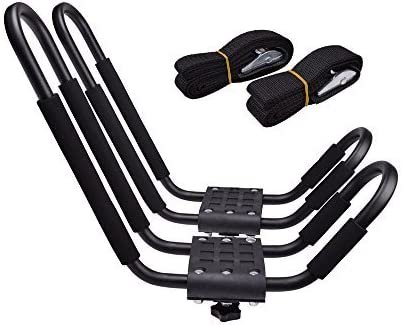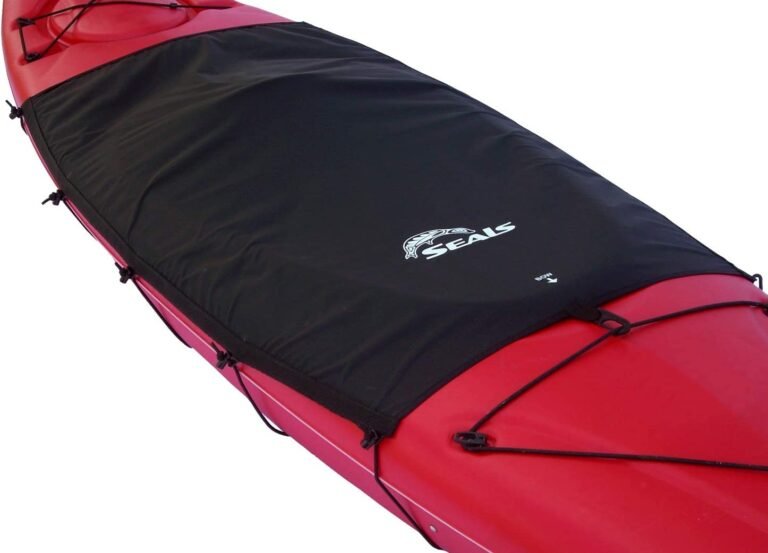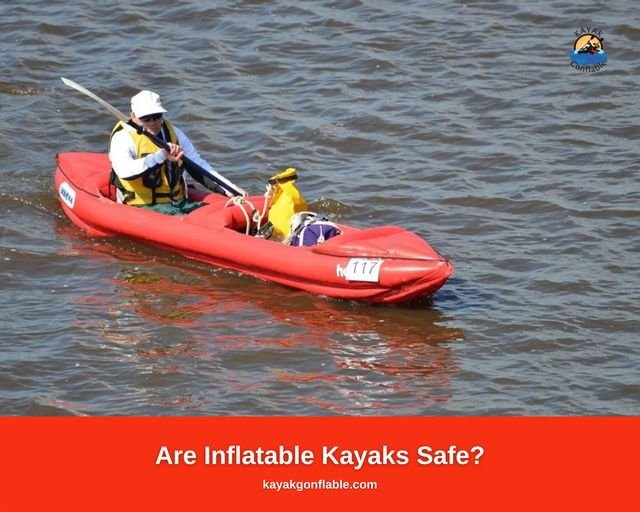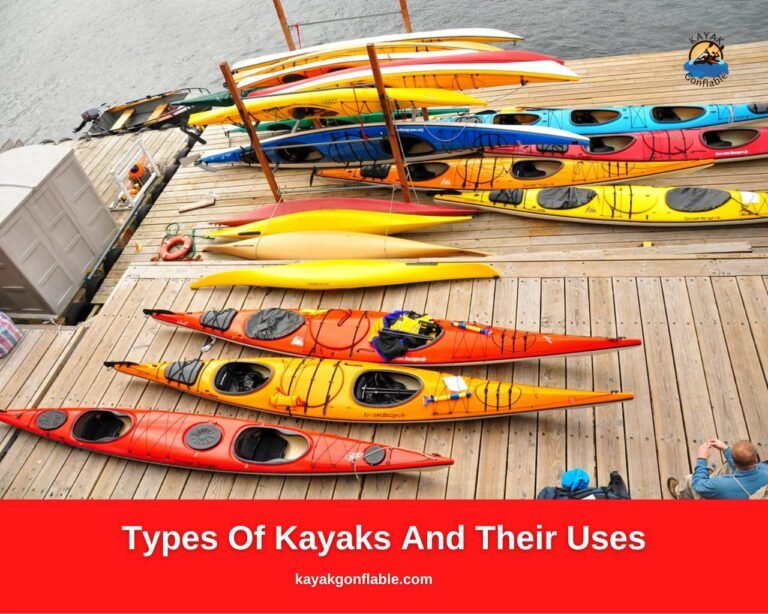Cómo transportar un kayak en un todoterreno

Transporte de kayaks dentro de SUV
Una vez que descubres los placeres del kayak y te enamoras del deporte, lo único que deseas es encontrar el camino hacia el agua para remar hasta quedar exhausto y luego repetir el proceso nuevamente.
Un paso clave para vivir esta realidad es conseguir un kayak propio, pero el verdadero desafío radica en transportar la embarcación. Los kayaks son generalmente voluminosos, y eso hace que llevarlos al agua para su aventura y regresar a casa una vez que haya terminado el día sea todo un desafío.
Para abordar este problema y que te resulte más fácil disfrutar del deporte que amas, existen varias formas de transportar kayaks se han inventado a lo largo de los años. Kayac bastidores de techo y los carros son las formas más populares de llevar su kayak a su destino previsto.
Pero si por cualquier motivo prefieres no hacer uso de ellos, siempre puedes transporta tu kayak en tu todoterreno.
Este método de transporte de kayak, naturalmente, tiene algunas limitaciones y es fundamental que sepas todo lo que necesitas al respecto si deseas utilizarlo.
En este artículo tienes a tu disposición todo lo que necesitas saber sobre el transporte de un kayak en tu todoterreno. Continúe leyendo y prepárese para llevar su kayak de forma segura al agua.
Ventajas de transportar su kayak con un SUV
Los kayaks se pueden transportar a su destino previsto de varias formas, una de las cuales es cargarlos en vehículos deportivos utilitarios. Las ventajas de transportar un kayak en un todoterreno se enumeran a continuación.
- Como los SUV son más largos que los vehículos promedio, resulta notablemente más fácil carga tu kayak en uno y todavía tienes suficiente espacio para el resto de tu equipo.
- Los SUV son más adecuados para viajar por terrenos accidentados, como suele ocurrir cuando se dirige al lugar de lanzamiento.
- Los vehículos deportivos utilitarios eliminan la necesidad de elevar el kayak hasta la altura de los hombros, como suele ser el caso cuando se utiliza una baca.
- No necesita preocuparse por la longitud adicional de su vehículo cuando utiliza este método, como lo haría si estuviera usando un carrito.
¿Cabrá mi kayak dentro de mi SUV?
Cuando decidió transportar su kayak en su vehículo deportivo utilitario, lo más probable es que haya tomado esa decisión para evitar el costo y las molestias de las bacas o carritos sin pensarlo mucho.
¿Por qué gastar dinero en esos accesorios cuando puedo simplemente cargar el kayak en mi SUV y seguir mi camino alegre, te preguntarás? La verdad es que si bien es posible transportar un kayak con un SUV, se imponen algunas limitaciones en el tamaño del kayak que puedes transportar.
Generalmente, el tamaño más grande de kayak que puede caber en su SUV tendrá una longitud de 10 pies y lo más probable es que parte de él sobresalga del vehículo en la parte trasera.
Intentar transportar un kayak más largo superará los límites de la seguridad y pondrá en peligro a usted y a quienes le rodean. Entonces, si bien un kayak puede caber dentro de un vehículo deportivo utilitario, debes tener en cuenta que depende de las dimensiones del kayak y del vehículo.
Los mejores kayaks para SUV
Para tener un viaje lo más tranquilo posible, es mejor que su kayak se transporte fácilmente dentro de su SUV. Los kayaks vienen en varias formas y tamaños y, como tales, no todos se ajustan a los requisitos.
Si ya posee un kayak, esta sección le permitirá saber si cargarlo en un SUV es una opción de transporte para usted.
Pero si no, puedes tener en cuenta si quieres o no transportar el kayak en un SUV en tu Lista de Verificación al comprar tu kayak. Los tipos de kayaks más adecuados para ser transportados en un todoterreno son:
- kayaks cortos,
- Inflable kayaks, y
- kayaks plegables
Cualquier kayak que no entre en ninguna de estas categorías no puede transportarse en un SUV y debe transportarse por otros medios para su seguridad y la de quienes se encuentran en las cercanías.
Kayaks cortos
Los kayaks generalmente tienen entre 6 y 16 pies de largo. La longitud del kayak que compres depende de dónde pretendas navegar con él, entre otras cosas. Si eres de los que planifica, también se considerará cómo transportarás el kayak antes de comprarlo.
Como se mencionó anteriormente, la longitud límite superior para cualquier kayak que se transporte en un SUV es de 10 pies. Eso significa que para que pueda emplear este método con éxito, su kayak debe tener 10 pies de largo o menos al momento de cargarlo en el vehículo.
La mejor manera de garantizarlo es comprar kayaks de 10 pies de largo o menos, para que la pelota esté en su tejado. Si te encanta navegar por los rápidos, usarás un kayak corto de forma predeterminada y cargarlo en tu SUV será una forma fácil de transportarlo.
Kayaks inflables
Fieles a su nombre, estos kayaks se pueden inflar cuando quieras usarlos y desinflarlos cuando termines el día.
Inflable kayaks Te brindan todos los beneficios de un kayak tradicional sin la mayoría de los problemas, y esa es una de las razones por las que son tan populares.
When deflated, kayaks inflables can easily be stored in a backpack or small box that can be kept in the trunk of your SUV along with your other gear without any hassle.
Si posee un SUV y se siente cómodo usando un kayak inflable, consiga uno. usted será feliz de haberlo hecho.
Kayaks plegables
Si eres novato en el mundo del kayak, quizás te sorprenda conocer la existencia de los kayaks plegables.
Los kayaks plegables existen y facilitan considerablemente la vida de los kayakistas, especialmente en las áreas de transporte y almacenamiento.
Si, por ejemplo, desea un kayak de más de 10 pies de largo y aún desea transportarlo con su vehículo deportivo utilitario, solo necesita comprar un kayak plegable y ese será el fin de tus problemas.
Tener un kayak plegable es una ventaja para nosotros, ya que no sólo puedes cargarlo en el maletero de tu vehículo sin problemas, sino que el hecho de que no tienes que plegar los asientos del vehículo para tener espacio adicional significa que puedes llevarlo Más personas en tu viaje.
Los kayaks plegables realmente te permiten disfrutar de lo mejor de ambos mundos.
Transporte de su kayak en un SUV
Una vez que tengas el kayak del tamaño adecuado, estarás listo para transportarlo en un SUV. Si tienes un kayak inflable o plegable, lo más probable es que no tengas mucho que hacer.
Sólo tienes que cargar el kayak en el maletero de tu todoterreno y tomar precauciones para asegurar que permanezca en un lugar para evitar posibles daños. Luego podrá conducir con seguridad hasta su destino.
Sin embargo, si tienes un kayak rígido o tu kayak plegable tiene una longitud considerable, transportarlo en un todoterreno no será tan fácil. A continuación se ofrecen algunos consejos que le ayudarán con el transporte.
Doblar los asientos del SUV
La capacidad de carga de un SUV es de aproximadamente 39,2 pies cúbicos. Afortunadamente, la mayoría de los SUV tienen asientos que se pueden plegar o quitar para aumentar el espacio de almacenamiento.
El espacio de almacenamiento cambia de 39 pies cúbicos a 74 pies cúbicos, espacio suficiente para cargar su kayak en su vehículo sin ningún problema.
Plegar los asientos de tu todoterreno es el primer paso para transportar tu kayak. El propósito de hacerlo es crear suficiente espacio para el transporte seguro de su kayak y otros accesorios.
Para obtener el máximo espacio de carga (desde el tablero hasta el portón trasero de su SUV), debe plegar el asiento del pasajero delantero y los asientos del pasajero trasero en línea de su SUV.
Eso le dará suficiente espacio para cargar y asegurar su kayak y al mismo tiempo dejar espacio para un pasajero detrás del conductor.
Si su SUV tiene asientos extraíbles en la tercera fila, quitarlos le dará aún más espacio para cargar su kayak y empacar su equipo. Incluso si no quita esos asientos, aún pueden usarse para transportar pasajeros.
NÓTESE BIEN: Nunca transporte pasajeros en los asientos de la tercera fila de su SUV si la puerta trasera o la escotilla del vehículo permanecerán abiertas debido a la longitud del kayak.
Cargue el kayak en el vehículo
Después de asegurarte de que hay suficiente espacio para colocar cómodamente el kayak, puedes proceder a cargarlo en el vehículo. La carga del kayak debe realizarse con cuidado y, si es posible, con ayuda para evitar dañar el kayak o tu vehículo, o incluso lesionarte.
Debes deslizar con cuidado el kayak de lado sobre la alfombra hasta que la punta del kayak se deslice entre los asientos delanteros.
También debes asegurarte de que la punta del kayak no se acerque demasiado al parabrisas de tu SUV. Esto se debe a que si el kayak no está bien asegurado, podría deslizarse hacia adelante cuando vayas a exceso de velocidad o si frenas bruscamente, pudiendo terminar con el parabrisas roto.
Transportar el kayak en tu todoterreno se supone que es la solución a un problema. No sería bueno crear otros problemas mientras se resuelve uno.
Cabe destacar que siempre debes desinflar o plegar tu kayak (según el tipo que tengas) antes de transportarlo. Hacerlo facilita la carga del kayak y al mismo tiempo libera espacio para otros accesorios.
Además, si tienes un kayak dividido, puedes simplemente desmontarlo y guardar las distintas piezas en tu SUV sin siquiera tener que plegar los asientos. Lo que hagas depende en última instancia del kayak que tengas.
Limite la parte del kayak que sobresale del SUV
Este punto es la verdadera razón por la que los kayaks de más de 10 pies de largo no se pueden transportar en un SUV. Si debe transportar su kayak en su SUV, lo mejor para usted es que la longitud del kayak sobresalga del vehículo lo menos posible cuando haya terminado.
No querrás que un conductor desprevenido choque con tu kayak porque no tuvo en cuenta la longitud adicional detrás de tu vehículo.
Otra razón para vigilar la longitud del kayak que sobresale del vehículo es que si sobresale demasiado, el kayak podría caerse del vehículo.
Generalmente, al menos dos tercios del kayak deben estar dentro de su SUV. Otra regla general es que no deben sobresalir más de 3 pies del kayak de su SUV.
En aras de la seguridad de todos los involucrados, muchos estados tienen leyes específicas para hacer cumplir esta regla. Debe asegurarse de conocer las leyes sobre el transporte de kayaks aplicables a su estado y la ruta que viajará y cumplirlas si no quiere tener problemas con la ley.
Asegure el kayak
Independientemente del tipo de kayak y de si plegó o no los asientos de su SUV, es imperativo que asegure el kayak una vez que esté en el vehículo. Asegurar el kayak es aún más importante cuando tienes un kayak rígido que cargas sobre los asientos plegados.
¿Por qué asegurar el kayak?, te preguntarás. ¿No basta con cargarlo en el vehículo? Aseguras el kayak por la misma razón que usas cinturones de seguridad en un vehículo.
La mayoría de las veces, conducir sin cinturones de seguridad no tiene consecuencias, pero en caso de colisión o accidente, no usar el cinturón de seguridad podría costarle muy caro.
Del mismo modo, un kayak mal asegurado puede convertirse fácilmente en un proyectil si las cosas van mal mientras conduce hacia su destino. Como puede imaginar, su kayak lanzado desde su parabrisas en una colisión empeorará una situación que ya es mala.
Asegure el kayak al vehículo con varias correas de leva (preferiblemente), cuerdas elásticas u otra cuerda fuerte a su disposición.
Cuando haya terminado, el kayak no debería poder moverse hacia adelante o hacia atrás independientemente de lo que le suceda al vehículo. Sin embargo, debes tener cuidado de no dañar tu kayak asegurándolo demasiado fuerte.
Asegure la puerta trasera del SUV con el kayak adentro
Si su kayak es bastante corto, debería poder cargarlo en su SUV sin que ninguna parte sobresalga del exterior. Si ese es el caso, simplemente puede cerrar la puerta trasera del vehículo como de costumbre y seguir su camino alegre.
Si parte de tu kayak se queda fuera del vehículo, sin embargo, usted tiene más trabajo por hacer. Para asegurar con éxito y seguridad la puerta trasera, primero debe encontrar la Puntos de anclaje en tu kayak. y dentro del vehículo.
Para los vehículos deportivos utilitarios (SUV), los puntos de anclaje suelen tener forma de anillos en D. Los puntos de anclaje proporcionan un lugar conveniente para sujetar las correas y, como están hechos de metal, ofrecen una sujeción segura.
Nunca debes utilizar anclajes de plástico, ya que pueden fallar fácilmente.
El siguiente paso para asegurar la puerta trasera es encontrar los puntos de anclaje de su kayak. Dependiendo de la marca de su kayak, podría tener una forma similar a los puntos de anclaje del SUV.
Después de localizar los puntos de anclaje, debes asegurar la puerta trasera y el kayak uniéndolos con correas de trinquete, cuerdas elásticas u otras cuerdas fuertes a tu disposición.
Sabrá que ha hecho un buen trabajo si la puerta trasera o la escotilla no están sueltas de ninguna manera y su kayak también está seguro. Recuerde tener cuidado al asegurar el kayak y la puerta trasera para evitar daños a cualquiera de ellos.
También es una buena idea utilizar un acolchado cuando su kayak sobresalga del SUV para que el casco de su kayak no se dañe. De nada sirve transportar tu kayak al agua si no te va a servir.
Coloque una bandera roja en el extremo del kayak que sobresale de su SUV
Aún por seguridad, si tu kayak sobresale de tu SUV después de cargarlo, debes colocar una bandera de colores brillantes, preferiblemente roja, en el extremo del kayak.
El objetivo de la bandera es servir como sistema de alerta temprana, alertando a otros usuarios de la vía sobre la protuberancia de tu kayak para que puedan tomar precauciones y evitar accidentes.
Colocar una bandera roja en el extremo sobresaliente de su kayak es una ley que se aplica en algunos estados, por lo que desea investigar las leyes de su estado con respecto al transporte de kayak y asegurarse de cumplirlas.
Sea consciente de la seguridad en su viaje
Después de colocar la bandera roja en el extremo que sobresale de su kayak (si su kayak sobresale de su vehículo) y asegurarse de que el kayak y su equipo estén asegurados, estará listo para salir a la carretera.
Es mejor programar su viaje cuando haya el menor tráfico posible y seguir una ruta con poco tráfico. No tiene sentido correr riesgos innecesarios.
Mientras conduces siempre debes estar atento al kayak para asegurarte de que no se suelte, y si tienes tiempo, no estará de más pasarte por la borda y hacer revisiones periódicas. Nunca se puede ser demasiado cuidadoso.
También querrás cumplir con las normas y reglamentos de tráfico mientras viajas con tu kayak. Sería una pena hacer todo ese esfuerzo para asegurar el kayak para el transporte y luego ser detenido por las autoridades por violar una ley u otra.
Una vez a salvo en su destino, se le recomienda descansar. Si tienes un viaje corto, puedes seguir adelante y comenzar tu aventura en kayak. Pero si tuviste un viaje largo o particularmente desafiante, querrás reunir fuerzas antes de lanzarte al agua.
Emplee prácticas seguras de navegación en kayak y obedezca las reglas de las aguas en las que navega. Lo más importante es pasar un rato divertido en el agua.
Los mejores SUV para kayaks
Todos los días se siguen fabricando vehículos nuevos con el objetivo de hacer la vida más fácil. En ese sentido, algunos SUV han sido diseñados para que a los kayakistas les resulte más fácil llevar sus embarcaciones y equipo de manera segura hacia y desde el agua. A continuación se detallan algunos de los mejores SUV para kayakistas.
El Mitsubishi Outlander Deportivo
El Mitsubishi Outlander Sport es un gran coche para kayaks. Es un SUV pequeño, lo que facilita las maniobras en espacios reducidos. Los asientos son cómodos y la suspensión suave, lo que lo convierte en un vehículo excelente para viajes largos.
El Outlander Sport también tiene mucho espacio de almacenamiento, por lo que puedes llevar fácilmente todo tu equipo de kayak. También cuenta con un gran sistema de entretenimiento y un sistema de navegación para hacerte la vida más fácil.
El Ford Explorador
Hablando de SUV grandes, uno de los mejores disponibles en el mercado es el Ford Explorer. Esta belleza abarca todo lo que atrae a la gente a los SUV y mucho más.
Tiene un buen sistema de combustible y está equipado con muchas características de alta tecnología. El vehículo también tiene tracción en las cuatro ruedas, lo que lo hace perfecto para llegar a esos lugares de difícil acceso para practicar kayak.
El Ford Escape
Si estás buscando un gran auto para llevar tu kayak a la carretera, no busques más que el Ford Escape. Este pequeño SUV tiene mucho espacio para guardar tu kayak y su cómodo viaje te hará disfrutar del viaje.
Con sus excelentes características de seguridad, el Ford Escape te brindará tranquilidad mientras exploras nuevas aventuras.
En conclusión, estas son las conclusiones clave para transportar un kayak en un SUV:
- Retire cualquier elemento innecesario del vehículo para dejar espacio;
- Asegure el kayak dentro del vehículo con correas o cuerda, asegurándose de que esté equilibrado y no pueda moverse;
- Si es posible, haz que otra persona te ayude a cargar y descargar el kayak;
- Asegúrese de cumplir con todas las normas de tránsito y transporte en su estado y en la carretera por la que viajará; y
- Esté atento a su entorno y tenga especial cuidado al conducir por carreteras estrechas o en malas condiciones climáticas.
El empleo de estas prácticas de seguridad garantizará que pueda llevar su kayak fácilmente del punto A al punto B de manera segura y con bajo costo. Gracias por leer.






